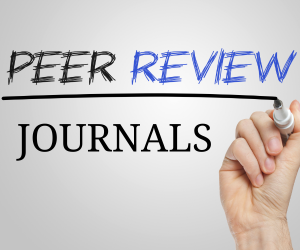ARTICULAR CARTILAGE REGENERATION: A SYSTEMATIC REVIEW
DOI:
https://doi.org/10.53555/nnmhs.v9i8.1797Keywords:
Articular cartilage, osteoarthritis, regeneration, tissueAbstract
Articular cartilage is a highly specialised type of connective tissue found in bones-joints. Its primary function is to provide a smooth, lubricated surface for movement and to reduce the coefficient of friction to facilitate movement. Regenerative medicine has been developed in recent years as an alternative to conventional surgery. The objective is to create a new tissue that is as similar as feasible to the existing cartilage. Due to the close relationship between tissue structure and composition and function, it is believed that the capacity to reconstruct structure is essential for regeneration. Regenerative medicine has become one of the most fascinating areas of biotechnology through the use of cell and gene therapy and tissue engineering. This has given researchers, physicians, and patients a great deal of optimism. The primary objective of advances in this field is to heal damaged tissue, not to supplant it with an external device. In the future, grafts and artificial prostheses may not be necessary.
References
Sophia Fox AJ, Bedi A, Rodeo SA. The basic science of articular cartilage: structure, composition, and function. Sports Health. 2009 Nov;1(6):461–8.
Armiento AR, Alini M, Stoddart MJ. Articular fibrocartilage-Why does hyaline cartilage fail to repair? Adv Drug Deliv Rev. 2019;146:289–305.
Borrelli Jr J, Olson SA, Godbout C, Schemitsch EH, Stannard JP, Giannoudis P V. Understanding articular cartilage injury and potential treatments. J Orthop Trauma. 2019;33:S6–12.
Burguera EF, Gato Calvo L, Pereira CR, Garcia FJB, Magalhaes JCS. Regenerative medicine approaches for osteoarthritis. Osteoarthritis; SM Gr Oklahoma, OK, USA. 2016;1–15.
Dzobo K, Thomford NE, Senthebane DA, Shipanga H, Rowe A, Dandara C, et al. Advances in regenerative medicine and tissue engineering: innovation and transformation of medicine. Stem Cells Int. 2018;2018.
Athanasiou KA, Darling EM, Hu JC, DuRaine GD, Reddi AH. Articular cartilage. Crc Press; 2013.
Correa D, Lietman SA. Articular cartilage repair: current needs, methods and research directions. In: Seminars in cell & developmental biology. Elsevier; 2017. p. 67–77.
Carballo CB, Nakagawa Y, Sekiya I, Rodeo SA. Basic science of articular cartilage. Clin Sports Med. 2017;36(3):413–25.
Guo X, Xi L, Yu M, Fan Z, Wang W, Ju A, et al. Regeneration of articular cartilage defects: Therapeutic strategies and perspectives. J Tissue Eng [Internet] 2023 Jan 1;14:20417314231164764. Available from:
https://doi.org/10.1177/20417314231164765
Liu Y, Shah KM, Luo J. Strategies for Articular Cartilage Repair and Regeneration [Internet] Vol. 9, Frontiers in Bioengineering and Biotechnology . 2021. Available from:
https://www.frontiersin.org/articles/10.3389/fbioe.2021.770655
Moran CJ, Pascual-Garrido C, Chubinskaya S, Potter HG, Warren RF, Cole BJ, et al. Restoration of articular cartilage. JBJS. 2014;96(4):336–44.
Wilusz RE, Sanchez-Adams J, Guilak F. The structure and function of the pericellular matrix of articular cartilage. Matrix Biol. 2014;39:25–32.
Roseti L, Grigolo B. Host environment: Scaffolds and signaling (tissue engineering) articular cartilage regeneration: Cells, scaffolds, and growth factors. Bio-Orthopaedics A New Approach. 2017;87–103.
Kim I. A brief overview of cell therapy and its product. J Korean Assoc Oral Maxillofac Surg. 2013;39(5):201.
Caddeo S, Boffito M, Sartori S. Tissue engineering approaches in the design of healthy and pathological in vitro tissue models. Front Bioeng Biotechnol. 2017;5:40.
Evans CH, Ghivizzani SC, Robbins PD. Gene delivery to joints by intra-articular injection. Hum Gene Ther. 2018;29(1):2–14.
Rodriguez-Merchan EC, Valentino LA. The role of gene therapy in cartilage repair. Arch Bone Jt Surg. 2019;7(2):79.
Downloads
Published
Issue
Section
License

This work is licensed under a Creative Commons Attribution 4.0 International License.
Licensing
Ninety Nine Publication publishes articles under the Creative Commons Attribution 4.0 International License (CC BY 4.0). This licensing allows for any use of the work, provided the original author(s) and source are credited, thereby facilitating the free exchange and use of research for the advancement of knowledge.
Detailed Licensing Terms
Attribution (BY): Users must give appropriate credit, provide a link to the license, and indicate if changes were made. Users may do so in any reasonable manner, but not in any way that suggests the licensor endorses them or their use.
No Additional Restrictions: Users may not apply legal terms or technological measures that legally restrict others from doing anything the license permits.





